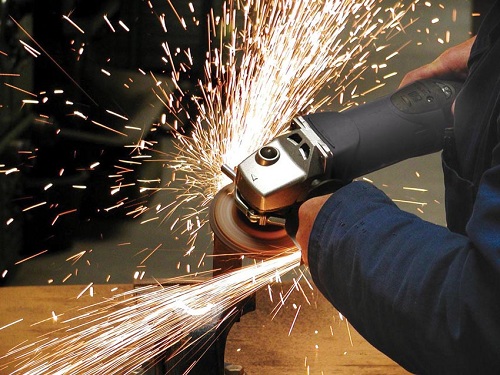I built this mean-looking Mustang about 5 years ago. It is built from the 1/25 scale Revell 1970 Mustang Boss 429 kit, which includes parts to build a standard (stock) version or a custom version. Well, I like drag cars, hot rods and customs a lot, but for some reason I have never liked to see modified Mustangs: to me, the original sleek look is just right and difficult to improve upon. So, I decided to build it as a factory-fresh car in an original Ford colour.
History: I won’t go on at length about the real Mustang Boss 429, after all if you are reading this you can read about them online, but it is quite an unusual Mustang. The Mustang was introduced by Ford in early 1965 as a new kind of car for American buyers: a smart-looking 2-door car with sporting aspirations and an extensive options list which enabled buyers to specify their car to be what they wanted, from a basic 6-cylinder cruiser to a hot V8-engined flyer with sports wheels and racing car gauges. By 1970, it had grown into a larger but meaner-looking car with bigger engine options, and the 429 (7-litre) big block V8 was one of the biggest ever available in Ford’s blue-collar sports car. The Boss Mustangs were really a marketing gimmick to capitalise on the contemporary wacky muscle car trend, and the Boss 302 and Boss 429 arrived at the height of the scene. Despite Ford’s marketing claims at the time, the 429 was not a superfast street rod like the Plymouth Barracuda, and it was not a nimble lightweight like its predecessors: it was designed to run endless fast laps on the racetrack, its huge 429 cubic inch (7-litre) V8 engine providing enough torque for effortless high speed.
The kit: The Revell kit is pretty good, though it has a few pitfalls which I did not manage to completely overcome, more on that later. American muscle cars are a bit odd from a modeller’s perspective – they came in a variety of exterior colours, but the interiors were mostly either black or white (some manufacturers offered other colours but white and especially black seem most common). My reference materials, chiefly the brilliant 1989 'Complete Book of Mustang' by the editors of Consumer Guide, showed white as a common colour for the 429, particularly with my preferred exterior paint colour Grabber Orange.
The fantastic 7-litre Ford V8 engine was brush-painted with a colour similar to Ford engine blue. It is nicely detailed in the kit and includes some nice manufacturer decals to add realism to the engine bay. I added sparkplug leads using 0.3mm black wire and gave the engine bay a coat of satin black paint to match those in my reference photos. I was careful when assembling the big engine to ensure that it sat low enough to allow the hood to close, though unfortunately the hood is not a very good fit on this model, being slightly warped and creating a poor join in the trim along the top of the grill and headlamps. As with many muscle cars, the Boss was fitted with Magnum (known as Rostyle in the UK) wheels with matt black segments, which were painted in carefully with a brush and some matt black enamel paint. The decals, other than those inside the engine bay, were limited to license plates and a small '429' motif behind the front wheelarches.
Overall I like this kit, though there is room for improvement. The overall shape is very good, though the front grill is a little too tall and not quite the right shape. Also, the real car was (and is) a rarity, so it feels as though build options and colours are limited if you intend to build it as a standard car.
Bad bits:
Poor hood fit is clearly visible from the front
The grill is a little too deep
Good bits:
Nice overall shape and detail
Well-detailed engine bay
Assembly generally straightforward






























